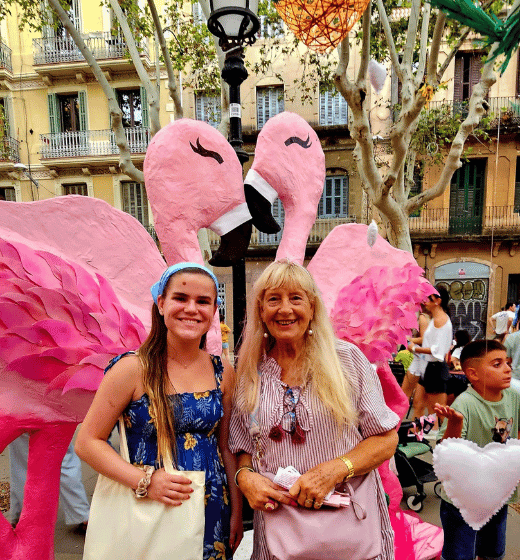

The Festa Major de Gràcia (also known as Festa de Gràcia) is one of the most vibrant festivals in Barcelona. Held every year in the Gràcia district, this seven-day festival is all about community spirit, creativity, and tradition. The streets? They undergo a complete makeover, featuring colorful decorations and themed artwork that make the entire area feel like a work of art. And the best part? It’s an event for everyone. Families, tourists, locals, you name it, they’re all involved.
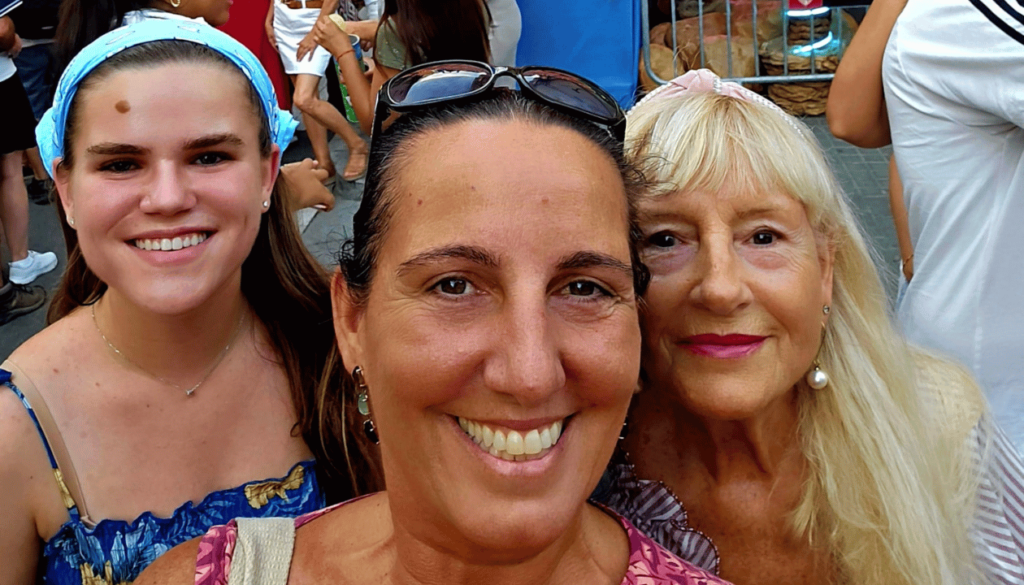
I’m Mónica Romero, and I’m here to take you through the heart of this iconic Gracia festival. From August 15th to 21st, the streets come alive with live music, dancing, fire runs, and traditional Catalan activities. It’s more than just a festival; it’s a celebration of Catalan culture. The dates of the festival are tied to deep religious customs, and August 15th marks the start of the festivities, which have roots in the historical origins of the celebration.
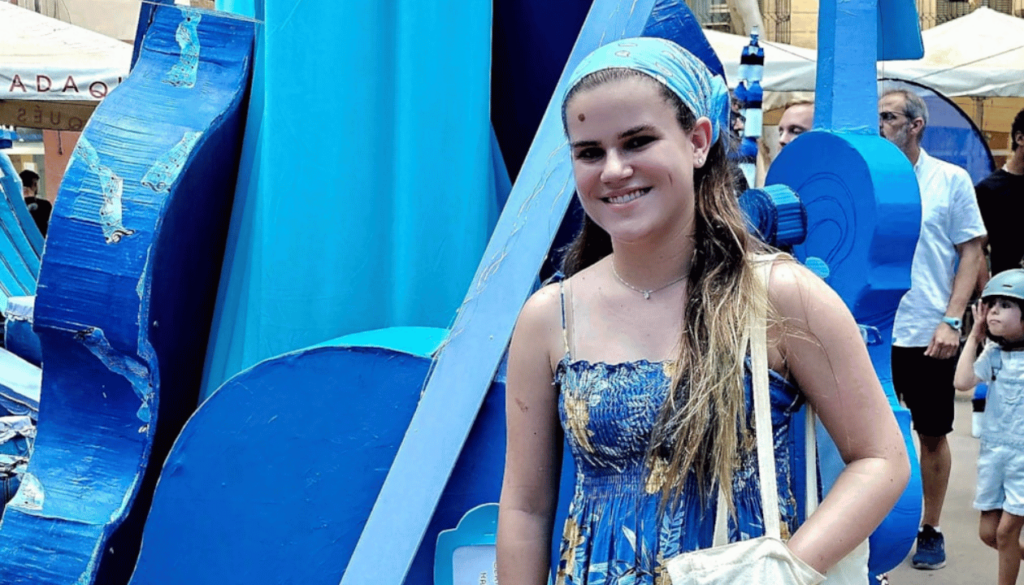
History and Origin of Festa de Gracia
The Festival began in the 19th century, initially as a celebration to honor the patron saint. And what’s cool? The festival has always kicked off on August 15th, the Feast of the Assumption.
It all began as a small, local event in Gràcia, which at the time was a rural village just outside of Barcelona. Over the years, Gràcia grew into the vibrant, artsy district we know today. The festival, however, stayed true to its roots, with community spirit and creativity at its core.

The first official Festa de Gràcia was celebrated in 1817, and from then on, the festival continued to evolve. While it traditionally centered around August 15th, over time it expanded to span from August 15th to 21st. Now, it’s not just a local event — it’s become a highlight of the city’s cultural calendar, attracting thousands of visitors every year.
What’s most special about this festival? It’s all about the local community. Residents continue to take the lead, decorating their streets and hosting cultural events that showcase their creative energy and passion for the celebration.
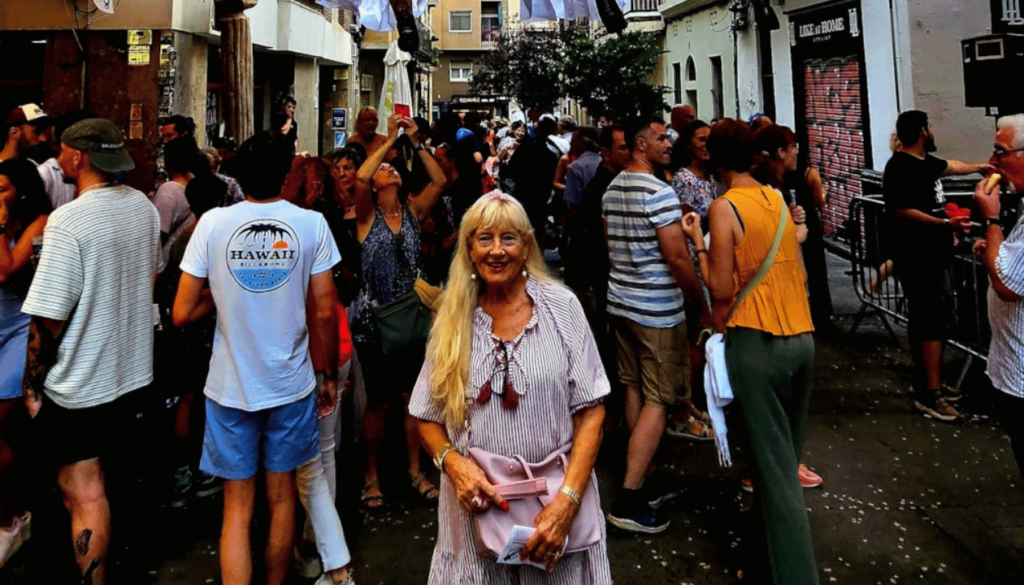
When and Where to Experience the Festival
The Gràcia festival is held in the Gràcia district of Barcelona, a charming neighborhood renowned for its narrow streets and picturesque corners. It’s easy to reach via the green line (L3) metro at Fontana station, so you won’t have trouble getting there.
The festival runs from August 15th to 21st, and the best time to visit is during the day to wander through the decorated streets and at night to soak in the live music and vibrant cultural events. One of the festival’s highlights is the best-decorated street competition, where different streets compete for the title based on creativity and the effort they put into their decorations.
The Gràcia district itself is full of life, with its bustling atmosphere, beautiful squares, and unique, narrow streets. It’s the perfect backdrop for a celebration that brings the entire community together. As you explore, you’ll find streets that have been transformed into art displays, all judged on creativity, security, and thematic coherence.
In addition to the street decorations, the festival also features cultural events and activities that reflect the heart of Catalan traditions. Don’t miss out on the local cuisine and drinks available throughout the festival — from tapas to paella, there’s always something to sample and enjoy.
Now, if you want to experience the Festa Major de Gràcia firsthand and immerse yourself in Spanish culture, you can stay with me through Spanish Express. I offer a 1- to 4-week Spanish Homestay Immersion Program (SHIP), where you’ll live and study Spanish in my home, just a short distance from the heart of Barcelona. I live with my parents and two Golden Retrievers, and we’d love to host you!

During your stay, you’ll not only get to explore the Gràcia festival but also experience life as a local, all while improving your Spanish in an immersive setting. You’ll learn in a relaxed environment, discover the beauty of Barcelona, and, of course, enjoy everything the festival has to offer.
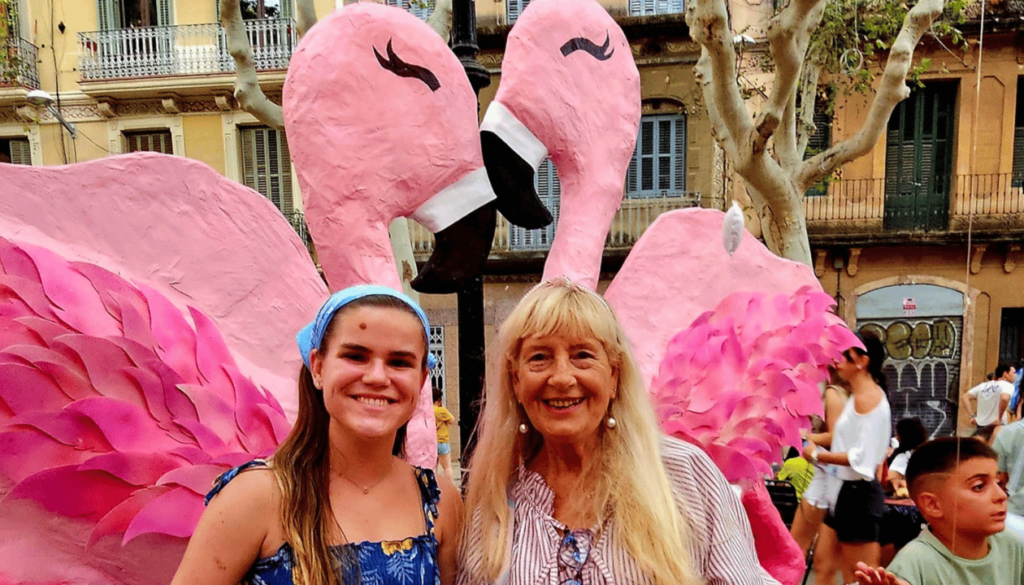
Main Activities and Events at Festa Major de Gràcia
The Festa Major de Gràcia is a celebration that’s bursting with energy, and it’s not just about the decorated streets (though those are a sight to see!). The festival features a range of activities and events, including live music performances, traditional stick dancers, and, of course, the famous human tower groups. But it doesn’t stop there — the fire runs and lively dancing are essential parts of the festival’s rhythm.
One of the highlights is the Cercavila de Cultura Popular, a parade that’s all about showcasing the heart and soul of local traditions. Imagine walking through the streets and suddenly seeing giant heads bobbing along — it’s one of the most iconic parts of the festival, adding a bit of whimsy and a lot of history to the atmosphere.
Beyond the parades, you can dive into a variety of workshops, exhibitions, and other cultural events throughout the week. At night, the streets come alive with colourful lights that make everything feel even more magical.
The main events of the festival include the decorated streets competition, which brings out the creative spirit of the community. Streets compete for the title of most creative and sustainable decorations, often featuring clever designs made from recycled materials. And, of course, you can’t miss the human towers and the fire runs — two of the festival’s most thrilling and unique traditions that you won’t see anywhere else.
- Live Music Performances
- Human Tower Groups
- Stick Dancers
- Fire Runs
- Dance Performances
- Cercavila de Cultura Popular (Traditional Parade)
- Workshops and Exhibitions
- Decorated Streets Competition
- Colourful Light Displays
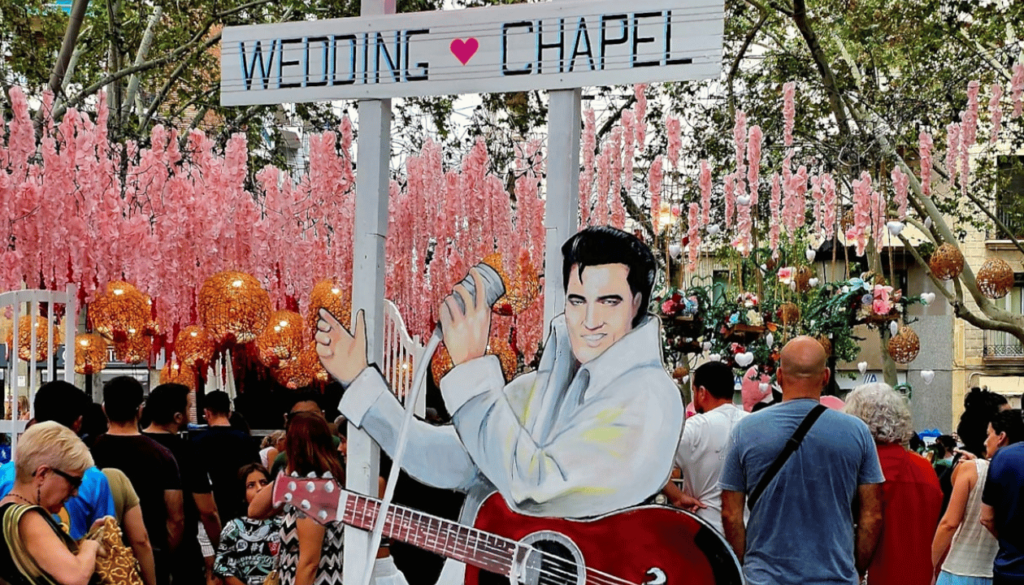
Getting to the Gràcia District
Getting to the Gràcia district is easy and convenient for everyone. The Fontana metro station on the green line (L3) is the closest stop, so you can easily hop on and off the metro to reach the festival. But if you prefer to take a bus or taxi, that’s also an option. If you’re staying in central Barcelona, you can even walk from nearby areas, like Plaza Catalunya. The great thing about Gràcia is that it’s right in the heart of Barcelona, making it accessible from pretty much anywhere in the city.
Just keep in mind, Gràcia gets quite busy during the festival, so expect large crowds. It’s definitely a good idea to plan ahead and get there early to make the most of your experience and enjoy everything without feeling rushed.
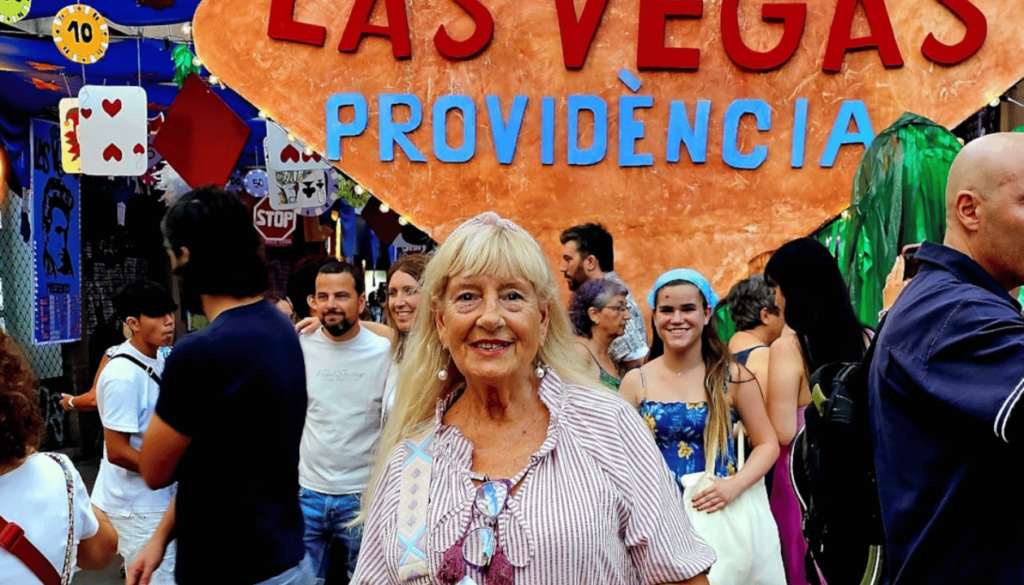
Community and Local Residents
One of the best things about Festa Major de Gràcia is the community-driven atmosphere. The festival isn’t just something organized by a few people; it’s the residents of Gràcia who truly bring the event to life. They contribute by raising money through donations and creative fundraising activities to support the materials and expenses needed to decorate their streets and organize events.
At the heart of the festival is a sense of community and creativity. Locals work together to decorate their streets, turning them into incredible works of art. Each street takes on a unique theme, and it’s amazing to see how much effort and passion the residents put into their displays.
The best part? The festival is completely free for everyone to enjoy. Visitors are not only welcome to witness the celebrations, but are also encouraged to participate and engage with the community. Whether it’s joining a dance, enjoying the food, or simply strolling through the beautifully decorated streets, it’s an event that’s perfect for the whole family. The locals are incredibly proud of their festival, and you can expect a warm, welcoming atmosphere from everyone you meet.
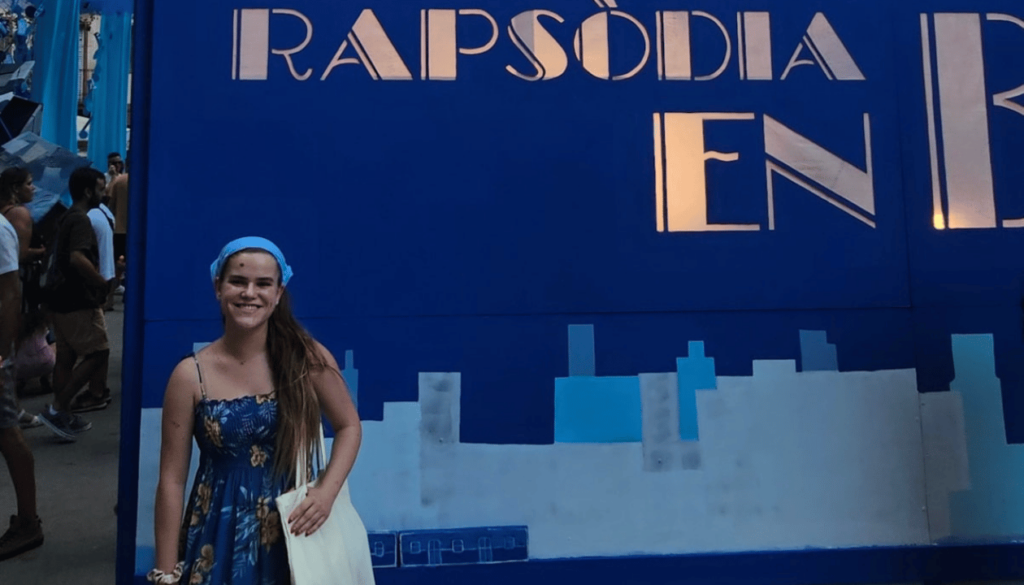
Exploring the Neighborhood and its Culture
The Gràcia district isn’t just about the festival; it’s also a unique and fascinating area full of rich history and vibrant culture. You can easily lose yourself wandering through narrow streets and picturesque plazas — each corner offers something new to discover. Whether you’re strolling by traditional Catalan architecture, soaking in the lively atmosphere, or simply taking in the sights and sounds of the festival, there’s always something to see and do.
What makes Gràcia so special is the perfect balance of old-world charm and modern-day culture. The neighborhood is home to a range of cultural attractions, from museums to art galleries, and even street art that adds an extra layer of character. It’s the kind of place where you can appreciate the local art while getting a real sense of the community’s creativity.
And, of course, no trip to Gràcia is complete without exploring the local cuisine. Take the time to indulge in traditional Catalan dishes and local beverages — each bite tells you a little more about the history and flavors of the region.
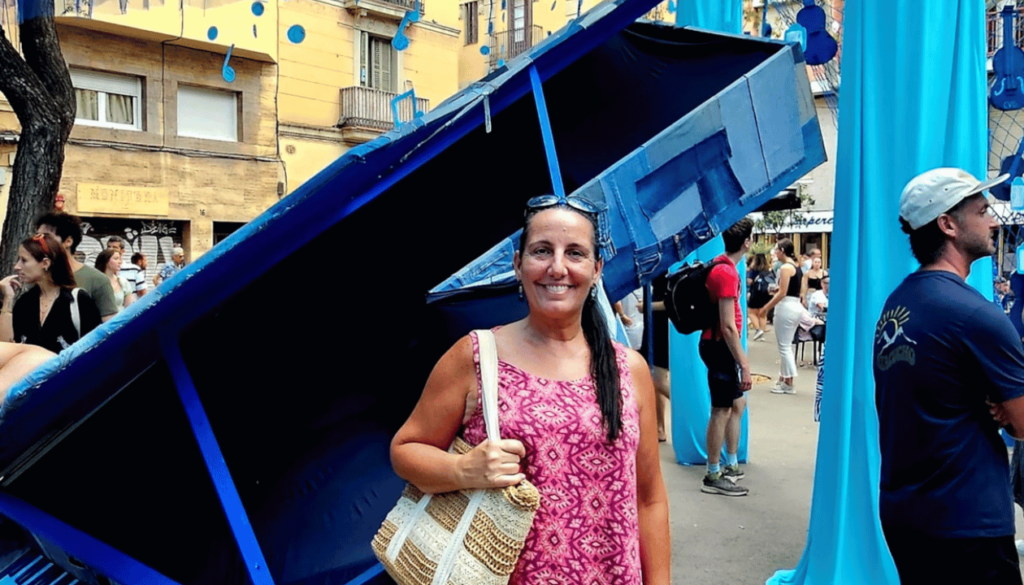
Food and Drink at the Festival
When it comes to food and drink, Festa Major de Gràcia doesn’t disappoint. The festival offers a mouth-watering array of traditional Catalan cuisine and local beverages that will make your taste buds dance. You can’t miss trying some classic festival foods, like escalivada (a smoky roasted vegetable dish) or botifarra (a delicious Catalan sausage), all washed down with a refreshing glass of cava or vermouth.
Aside from the more traditional festival foods, there’s also a variety of street food stalls scattered around the festival grounds, offering everything from quick bites to sweet treats. Whether you’re looking for something savory or sweet, you’ll find plenty of options to keep you fueled as you explore the festivities.
And it’s not just about the festival vendors — local bars and restaurants in Gràcia serve up a mix of both traditional and modern cuisine, giving you the opportunity to try a range of local flavors and styles. It’s the perfect way to enjoy some downtime between all the events and take in the local vibe
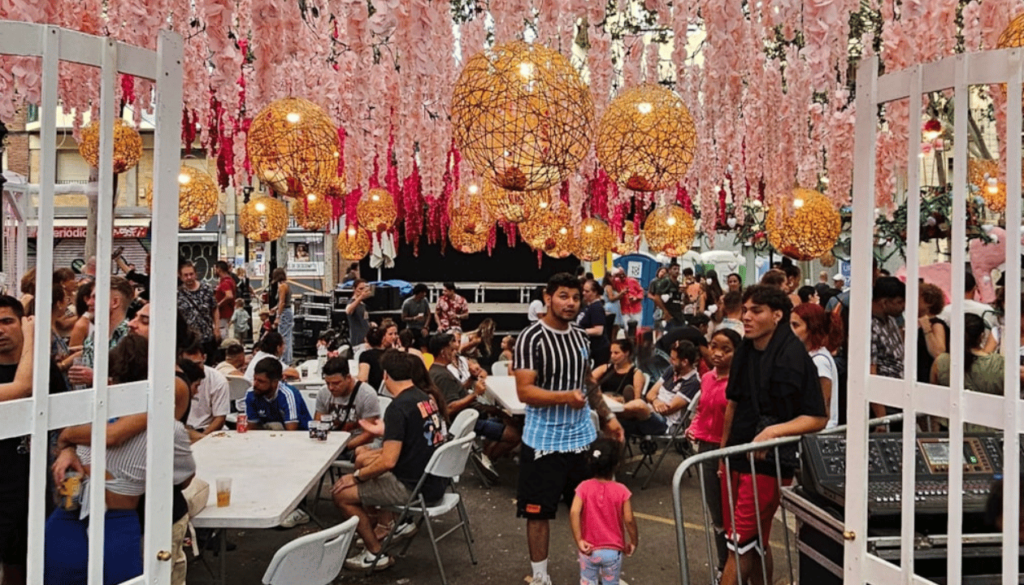
Human Towers and Other Performances
No visit to the Festa Major de Gràcia would be complete without witnessing the thrilling performances that are at the heart of the festival. One of the most iconic features of the festival is the human towers, or castells. This unique and exhilarating tradition involves teams of people coming together to form human towers, often reaching impressive heights. The acrobatic stunts and synchronized movements are a testament to the skill and teamwork required to create these towering structures.
Another exciting performance is the stick dancers, who are a long-standing part of the festival’s traditional activities. These performers dance and spin, skillfully moving to the rhythm of the music. Their movements are graceful and powerful, and the energy they bring to the festival is contagious.
Then there are the fire runs — an electrifying experience where performers run through the streets with flaming torches and sparks flying all around them. It’s a thrilling sight and one of the most unique elements of the festival. Watching the fire and light dance in the night sky adds an element of magic to the entire celebration.
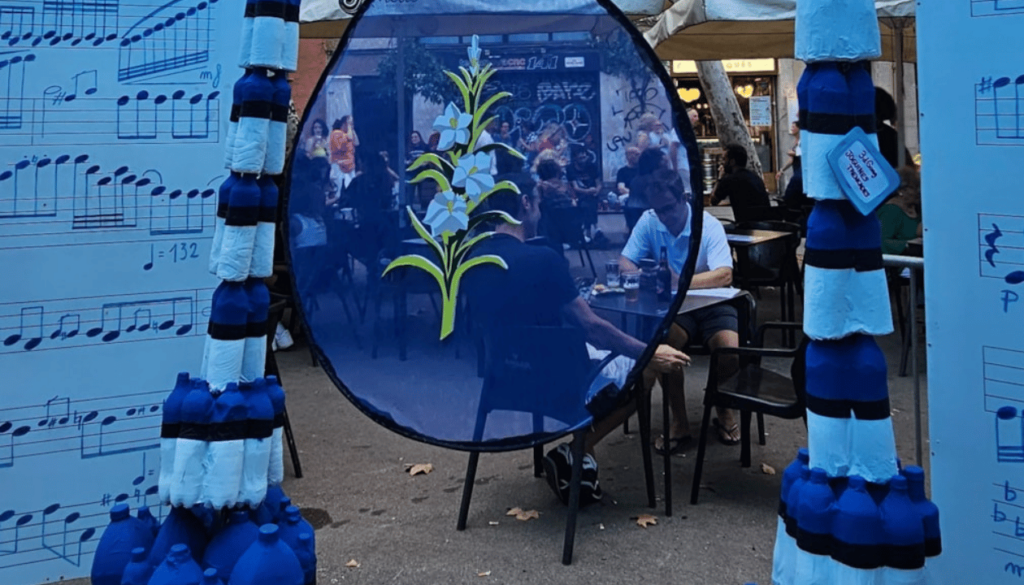
Accommodation Options: Where to Stay During the Festival
Finding a place to stay during the Festa Major de Gràcia can be tricky, especially with over half a million visitors flocking to the area each year. The Gracia district offers various options like cozy hostels, boutique guesthouses, and stylish hotels. However, since the Gracia neighbourhood is at the heart of the popular festival, it can be quite difficult to secure accommodation close to the main events.
For those who want to be right in the middle of the action, look for accommodation near Plaça del Sol, Plaça del Diamant, or along Carrer de Verdi — these areas are famous for their vibrant atmosphere and proximity to the Gràcia festival. If you prefer a quieter stay, you can find hotels in the city center, just a short ride away on the Green Line (L3) metro. The Fontana metro station is particularly convenient, placing you within easy reach of the Gràcia district and all the festival’s lively celebrations.
With the festival drawing large crowds, it’s essential to book your accommodation early. Whether you’re looking for a luxury hotel or a budget-friendly hostel, staying close to the Gràcia neighbourhood ensures you won’t miss a moment of the action, from early morning workshops to late-night concerts. If you’d prefer a more personalized experience, our Spanish Homestay Immersion Program (SHIP) is the perfect choice! Stay with us and experience the Festa Major de Gràcia firsthand while immersing yourself in Spanish culture.
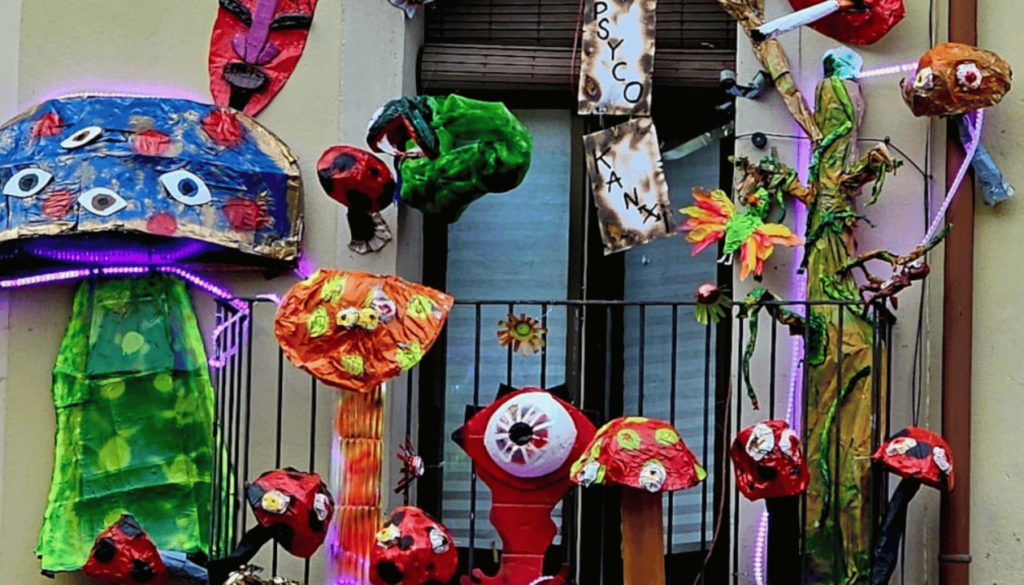
Insider Tips and Secrets for an Unforgettable Experience
As a local host teacher in Barcelona, I’ve had the privilege of experiencing the Festa Major de Gràcia from both a resident’s and a visitor’s perspective. From the moment the festival begins, I know exactly where to be and when to go for the best experience — and I’m excited to share my insider tips with you to help make your time at the Festa Major de Gracia unforgettable!
Here are my top tips to ensure you have the best time at the Festa Major de Gràcia:
- Visit during the week: The nights from Thursday to Sunday are bustling with energy and crowds, but if you visit earlier in the week, you’ll experience a more relaxed vibe. It’s the perfect time to admire the intricate decorated streets without feeling rushed.
- Explore beyond the famous streets: Don’t just stick to the popular areas! Walk through Carrer de Joan Blanques and other participating streets. These hidden gems showcase the local community’s creativity, with each street having its own unique theme. It’s a chance to experience more than just the popular festival spots and discover what makes the Gracia neighbourhood so special.
- Catch the performances: Keep an eye out for human tower groups and stick dancers performing in the streets. These traditional performances bring the festival’s spirit to life and give you a taste of Catalan culture. They’re an iconic part of the Gracia festival and truly capture the essence of this popular festival. festival nights
- Don’t miss the Baixada del Pilar Caminat: One of the festival’s true highlights, this event features a human tower being carefully carried between two plazas. It’s a powerful display of strength and community unity — one of the unique experiences that make Festa Major de Gràcia unforgettable.
- Get a festival guide: To navigate the decorated streets and events, grab a festival guide. It includes a map of the streets, a schedule of events, and plenty of helpful tips to make sure you don’t miss anything. It’s a great resource for visitors who want to make the most of this lively celebration.
- Respect the community spirit: The Festa Major de Gràcia is all about local pride and community creativity. Be mindful of the hard work that’s gone into decorating the streets, and take the time to really immerse yourself in the joyful atmosphere. It’s a community-driven festival, and engaging with the locals will make the experience even more meaningful.
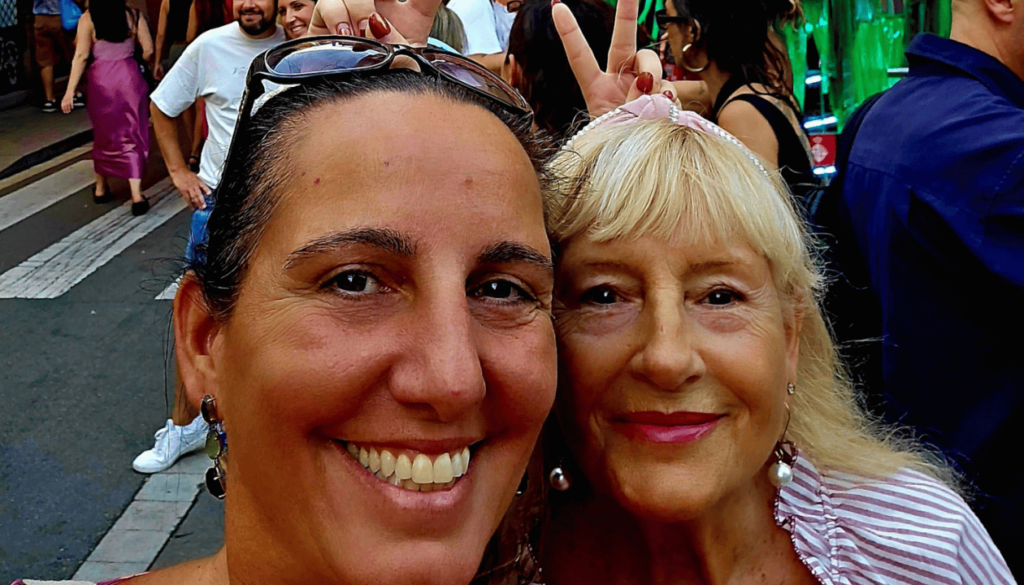
What Makes the Gracia Festival So Special for Language Learners Like Fallon
The magic of Gràcia isn’t just in the decorations — it’s in how the whole neighborhood becomes your teacher.
Fallon found herself chatting with neighbors about street themes, asking for directions, complimenting lanterns, and picking up Catalan words she’d never find in a textbook. Each street’s unique design sparked real conversations. Locals were eager to explain how they’d spent months crafting papier-mâché sharks or cardboard planets.
The festival’s community vibe made mistakes feel normal — instead of a classroom, Fallon had 23 beautifully decorated streets to practice greetings, questions, and small talk. Between foam parties and the correfoc (where locals dressed as devils run through the streets with fireworks), there were endless opportunities to ask ¿Cómo se dice esto? and get answers in the friendliest way.
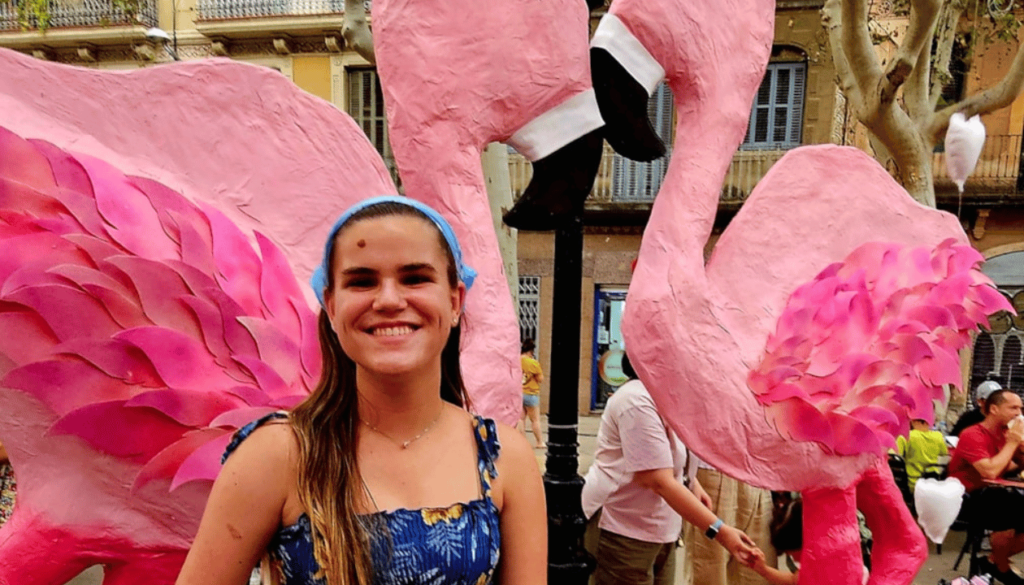
Fallon’s Favorite Moments at the Festa Major de Gràcia
Walking Through Living Art
Fallon’s highlight was wandering down Carrer Verdi and Carrer Berga, two of the most famous streets for decorations. One year’s theme was El Fons del Mar — the ocean floor with giant jellyfish floating overhead. Fallon struck up a conversation with volunteers about how they made it all from recycled plastic and cardboard, practicing new words like medusa (jellyfish) and cartón (cardboard).
Fire Runs & Castellers
At night, the correfoc turned the streets into sparks and drums. Fallon joined crowds dodging harmless fireworks, laughing and shouting alongside families. She also watched the castellers — human towers at Plaça de la Vila, where locals formed breathtaking eight-level towers while the crowd chanted Catalan encouragements. Fallon noted new cultural phrases and the sense of trust and teamwork they inspired.
Real Conversations Everywhere
From ordering butifarra (Catalan sausage) at a pop-up stall to asking where to watch the gegants parade, Fallon’s Spanish flowed naturally. The festival made her braver — she learned new words for decorations, food, directions, and little jokes shared with neighbors under paper lanterns.
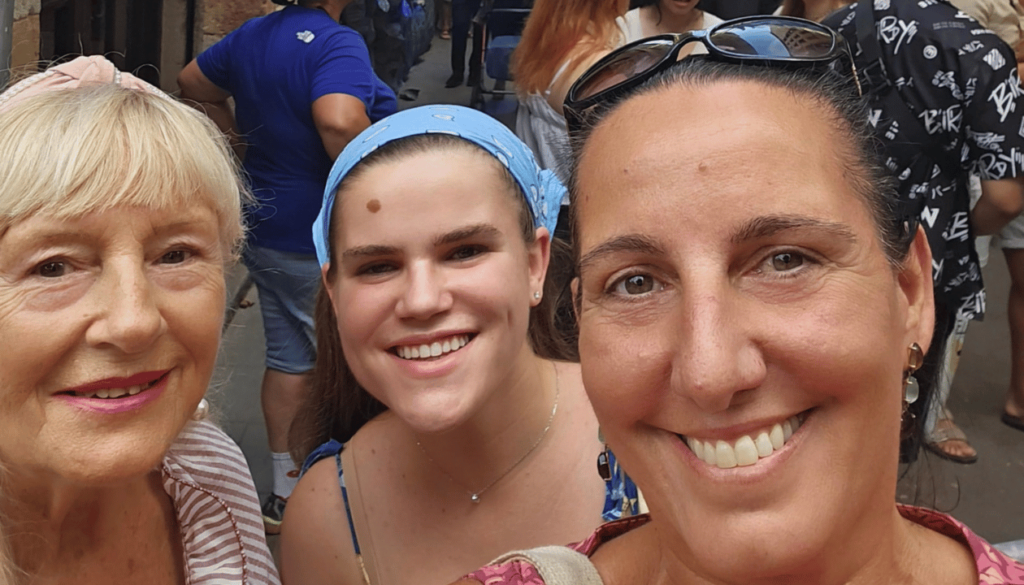
A Festival that Teaches You Spanish
Fallon’s journey shows how a festival can become a classroom:
| Festival Moment | Language Learned |
|---|---|
| Asking for directions | Phrasal structures & polite requests |
| Complimenting decorations | Adjectives & themed vocabulary |
| Ordering food | Numbers, questions, and local dishes |
| Chatting with neighbors | Catalan expressions & slang |
By the end of the week, Fallon didn’t just have better Spanish — she had memories stitched together by conversations, laughter, and cultural pride.
Join the Celebration
The Festa Major de Gràcia is proof that language comes alive when you step into the heart of a neighborhood, mingle with locals, and let a street party become your school. If you ever find yourself in Barcelona in August, follow Fallon’s lead: grab a fan, wander Gràcia’s decorated streets, talk to everyone, and watch your Spanish grow with every ¡Hola!

